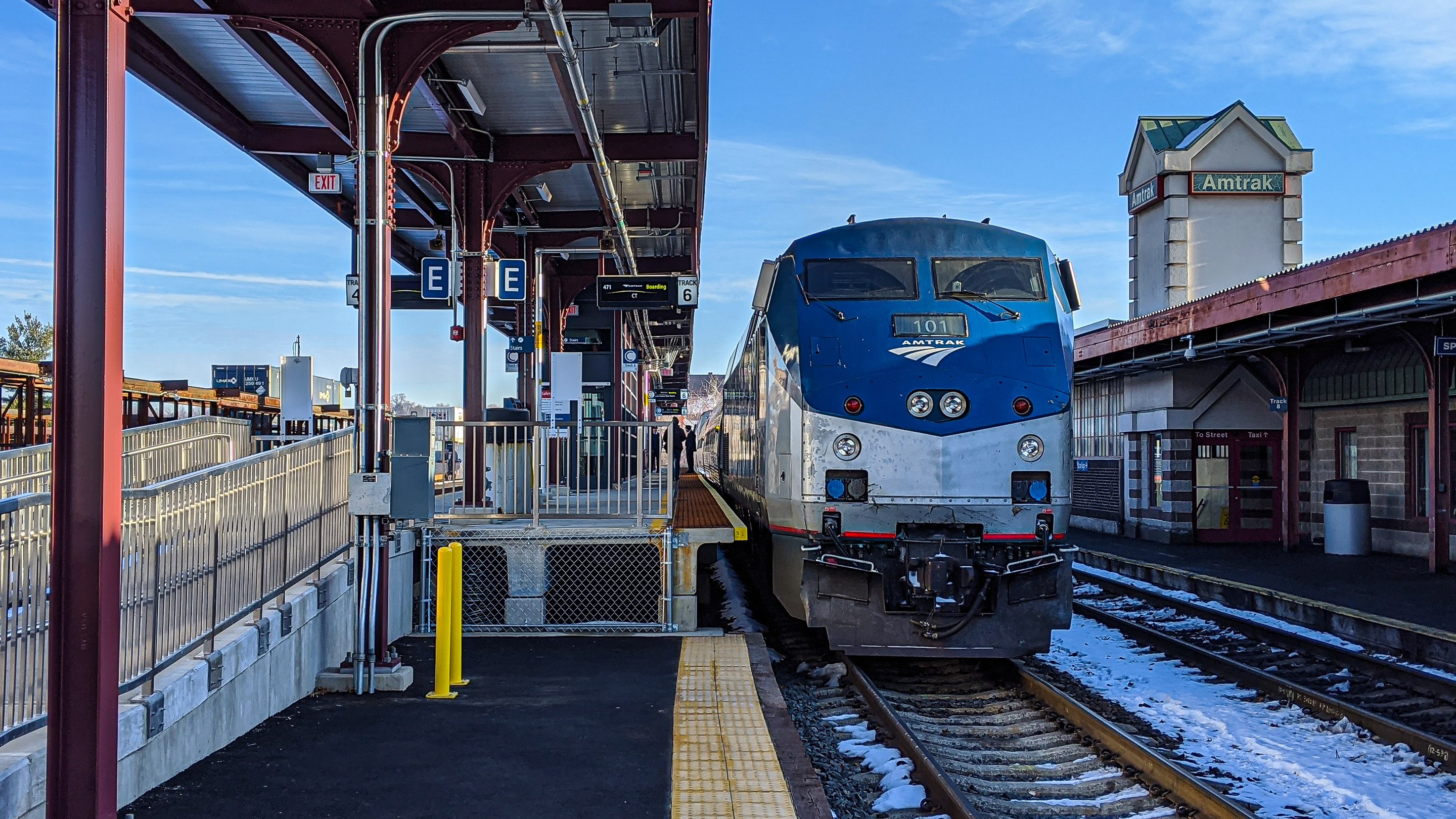MassDOT is expanding its intercity passenger rail plans for western Massachusetts to incorporate more north-south service through the Connecticut River Valley and a possible new route between Boston and Albany, New York.
At Wednesday's MassDOT Board of Directors meeting, Rail and Transit Administrator Meredith Slesinger delivered a brief presentation about MassDOT's plans for an overlapping network of new and existing intercity passenger rail services through a new hub in downtown Springfield.
Where MassDOT had previously been focused on east-west rail connections, the agency is now looking at linking more destinations – inside and outside of the state's borders – to the north and south as well.
Slesinger called the new vision "compass rail" – a vision for new intercity passenger rail routes that connect north-south routes through the Connecticut River Valley with east-west routes that connect Albany to Boston, with Springfield as the hub of the compass.

At the end of September, MassDOT also posted a hiring announcement for a new "Compass Rail/East-West Director," a position it describes as a "senior management role (that) will focus on the planning, development, and construction of Massachusetts Compass Rail."
New 'Inland Route' to connect Boston to Connecticut
As we reported here last month, MassDOT recently won a $108 million federal grant to upgrade the rail line between Springfield and Worcester to allow for faster passenger trains between Springfield and Boston.
Slesinger told the MassDOT board on Wednesday that those track upgrades would support two new daily round-trips on a new Amtrak "Inland Route" between Boston and New Haven, Connecticut via Worcester, Springfield, and Hartford.
"The project will improve the Boston-to-Springfield travel time from about 2 hours and 40 minutes today. We're hoping to get as close as 2 hours as possible," said Slesinger.
Those two new Amtrak trips will complement several other existing Amtrak routes that connect Springfield to the rest of the Connecticut River Valley, including the Valley Flyer, the Vermonter, the Northeast Regional, and Connecticut's Hartford Line trains.
East-West vision now extends to Albany
But in addition to improving connections to the east, MassDOT is also seeking funds to add more Amtrak service to the Berkshires with connections to Albany, a metropolitan area of 1.1 million people that's right across the Massachusetts border.
A proposed new "Boston and Albany" Amtrak route would also use the upgraded tracks between Worcester and Springfield, but instead of turning south into Connecticut, it would continue west to Pittsfield and Albany.
That would complement Amtrak's existing Lake Shore Limited route, which runs from Boston to Chicago with one daily round trip.
"We've been advancing these two intercity rail corridors (the Inland Route and the Boston-Albany route) and we've submitted a two applications to FRA for acceptance into its Corridor I.D. Program. This would bring federal support for a future service development plan, and future implementation," said Slesinger.
Given the recent award for the Inland Route, Slesinger said she's "fairly confident about our chances" with the FRA for those applications.
Progress already underway
In addition to the funding MassDOT has won to upgrade the tracks between Springfield and Worcester, MassDOT also has a smaller grant in hand to upgrade tracks and facilities in the vicinity of Springfield Union Station.
According to a grant award announcement from 2022, MassDOT is planning additional boarding platforms, new crossover tracks and storage tracks, and a new layover facility, all of which will increase capacity to accommodate more Amtrak trains.
The state's new Capital Investment Plan also includes funds to design a new passenger rail station in Palmer, which could become a new stop on the Inland Route.
While many of the state's local transit agencies still haven't recovered their pre-pandemic levels of ridership, Slesinger reported that Amtrak's services have bucked that trend.
"Between January and July of this year, we've seen 99,000 trips to and from Massachusetts stations, which is 30 percent higher than our pre-Covid levels in 2019," said Slesinger.






